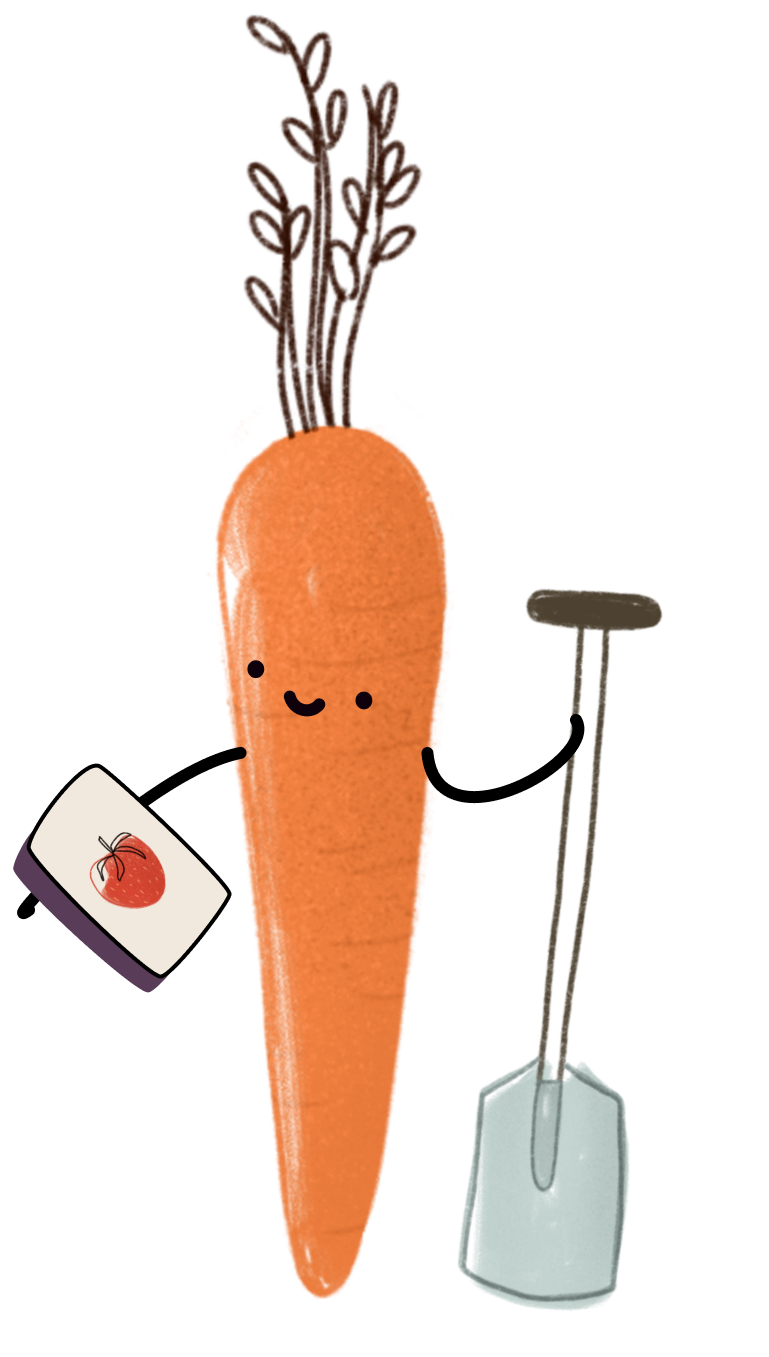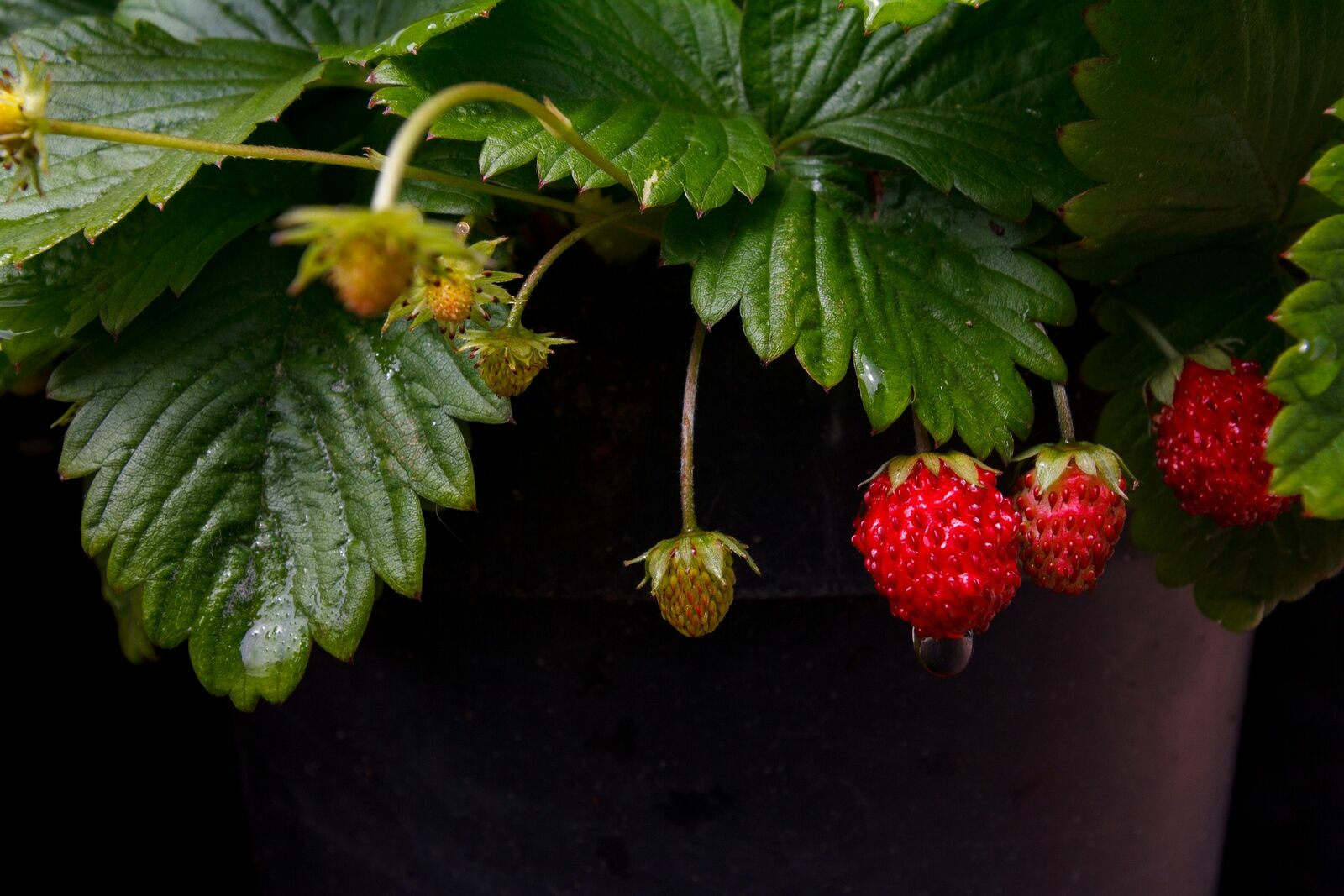
Strawberry Types: List of Best Strawberry Varieties
The variety of strawberry types is huge. We give you an overview of popular strawberry varieties and types. There are early to late varieties that you can combine for a rich and long harvest. A distinction is also made between everbearing and single-bearing varieties. You can find out what these are and what examples of varieties there are here.
This Article Contains:
- Different Types and Varieties of Strawberries at a Glance
- Garden Strawberries: Strawberry Varieties for the Garden
- Single-Bearing Strawberry Varieties: Early & Late Varieties
- Everbearing Strawberries: The Best Varieties
- Old Strawberry Varieties: List of Special Varieties
- Best Strawberry Varieties for the Balcony: Hanging Strawberries
- Table: List of Strawberry Varieties
- Different Strawberry Types and Varieties: Download Table Here
- Frequently Asked Questions About Strawberry Varieties
Quick Overview
Garden Strawberries: Single-Bearing & Multiple-Bearing Varieties
- Single-bearing strawberry varieties only produce fruit once a year in spring for two to four weeks. A distinction is made between early, medium and late varieties.
- Examples of varieties: Alice, Arosa, Camarosa, Clery, Darselect, Elsanta, Juliette, Pandora, Rosie, Senga Sengana,...
- Multiple-bearing strawberry varieties have a wider harvest window, but usually produce smaller fruit.
- Examples of varieties: Amandine, Bravura, Favori, Furore, Hademar, Mara de Bois, Ostara,...
Early, Medium & Late Varieties
- Early varieties: e.g. Christine, Clery, Dahli, Daroyal, Donna, Elvira, Evita, Honeoye, Lambada
- Medium varieties: Darselect, Deluxe, Elsanta, Korona, Polka, Renaissance, Senga Sengana, Sonata, Symphony
- Late varieties: Alice, Faith, Florence, Mieze Schindler, Malwina, Pandora, Salsa, Snow White, Vicoda
Hanging Strawberries for the Balcony
- Varieties that are suitable for vertical climbing or hanging cultivation include Flamenco, Hummi, Kletter Toni, Super Star or Toscana
Different Types and Varieties of Strawberries at a Glance
Strawberries have long played an important role in the human diet. Our hunting and gathering ancestors already snacked on the sweet fruits of the strawberry as a gathering fruit. They began to be cultivated on a large scale in the Middle Ages. At that time, only the wild strawberry, which is native to Europe, was known.
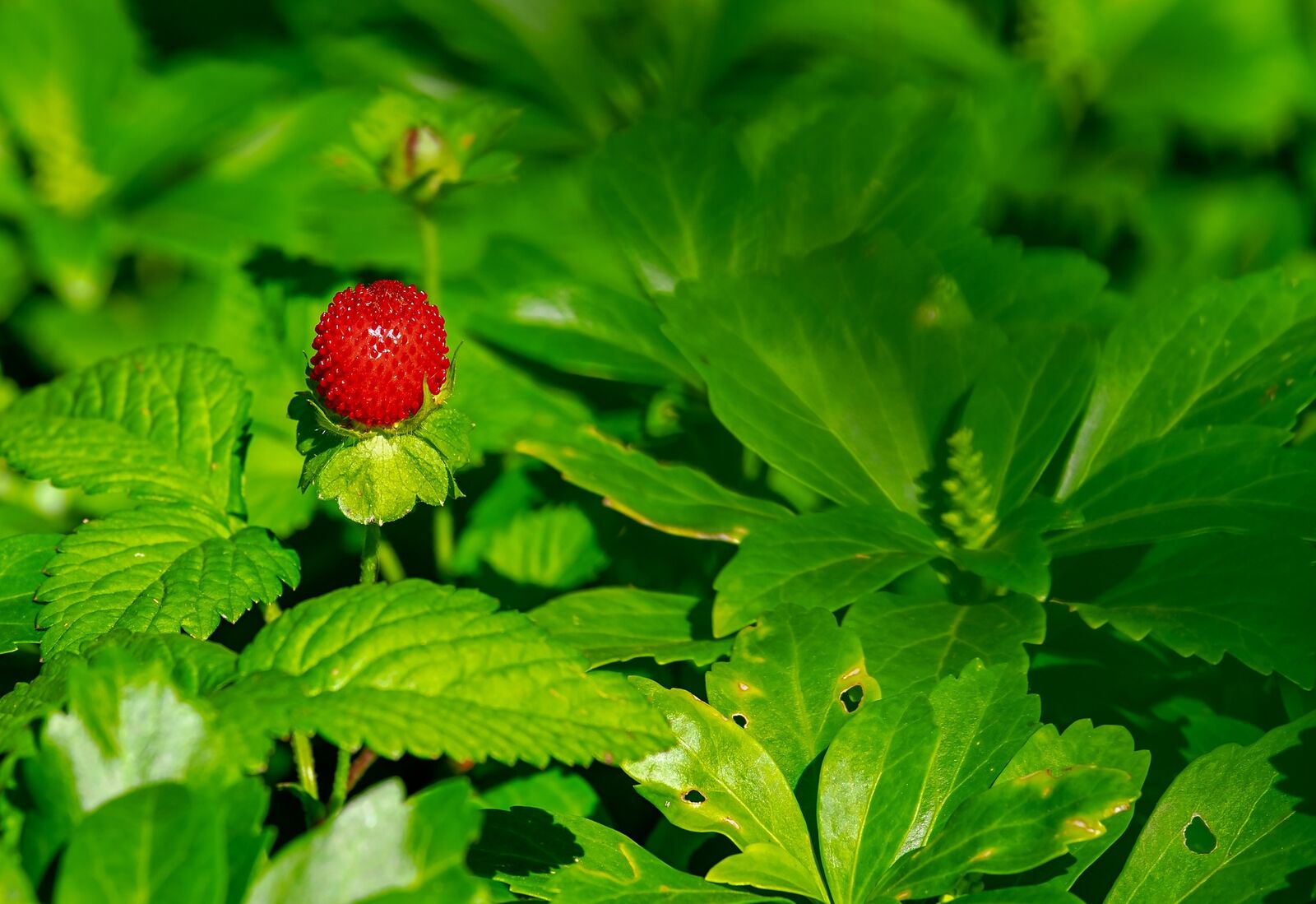
Wild strawberries (Fragaria vesca) are a species that produces comparatively small but very aromatic fruits. You can often find this native strawberry variety growing wild in forests or meadows. Month strawberries, which bear fruit several times a year, also originate from this species. These include varieties such as 'Ostara' and 'Toscana'. There are also other old strawberry varieties that originated in other parts of the world. These include the apricot strawberry (Fragaria nilgerrensis), which originates from South East Asia. This everbearing wild form is reminiscent of the wild strawberry in taste. However, it produces apricot-like fruit. Another wild form from the Himalayas is the cracked strawberry (Fragaria viridis).
The scarlet strawberry or raspberry strawberry (Fragaria virginiana) is native to North America. This variety produces small fruits with an intense aroma and sweet taste. Another American strawberry species is the Chilean straw berry (Fragaria chiloensis), which can produce white, pale pink to bright red fruits. A cross between the scarlet strawberry and the Chilean strawberry results in a new species: the garden strawberry (Fragaria x ananassa). Garden strawberries are cultivars of wild strawberries that produce larger fruits. There are multiple-bearing and single-bearing varieties, among which there are early-bearing and late-bearing varieties. Examples of garden strawberries are 'Elsanta' or 'Korona'.
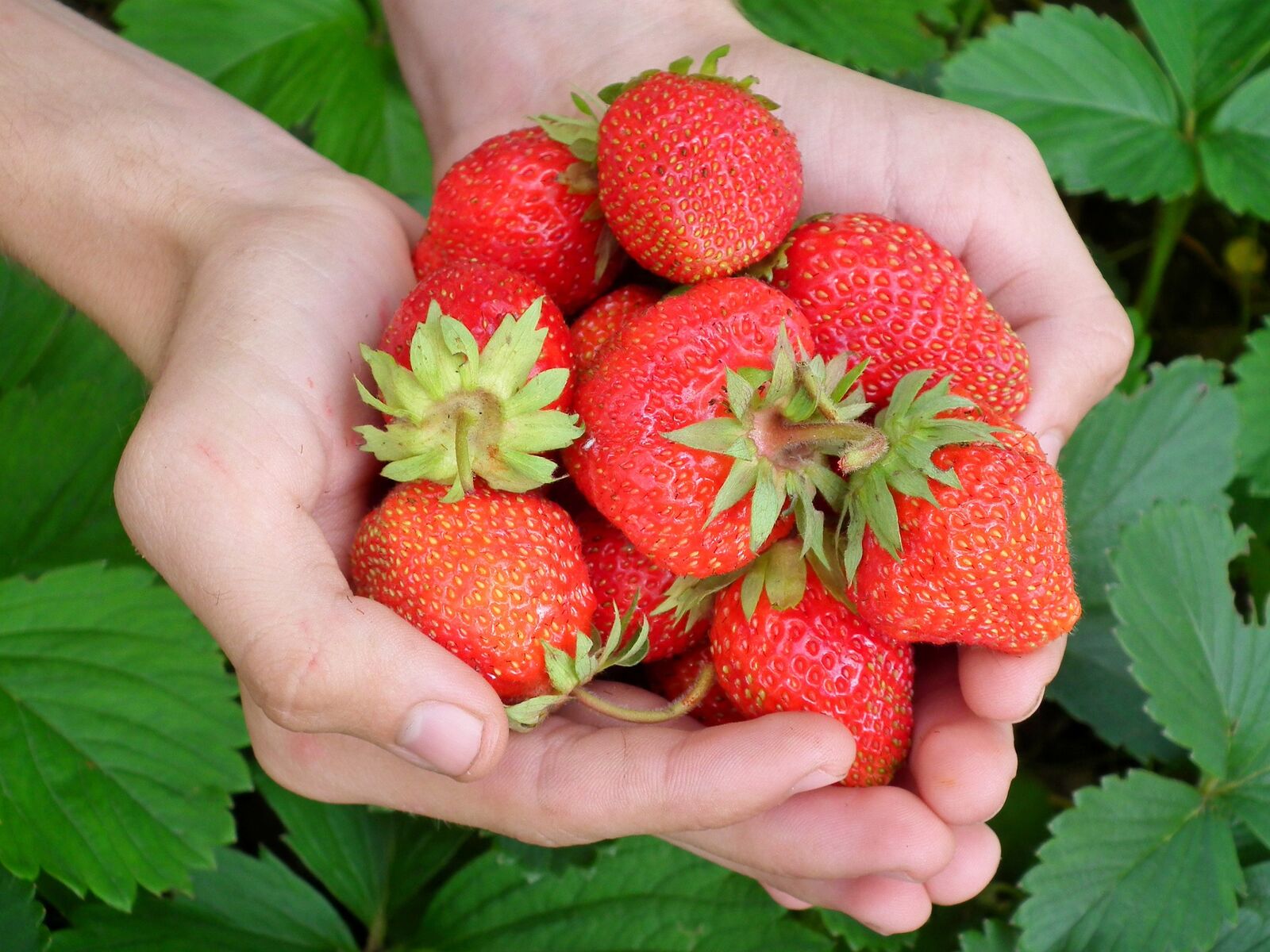
In addition to these varieties, there is also the special musk strawberry (Fragaria moschata), also known as the cinnamon strawberry or Bisamer strawberry. This variety stands out from others due to its special musky flavor. However, these strawberries do not tolerate frost or strong temperature fluctuations. Due to their vigorous growth, they grow larger than garden strawberries. Varieties of musk strawberries include 'Capron' and 'Profumanta di Tortona'. Strawberries have been cultivated by people all over the world for a very long time, so the variety of strawberry species is huge. We have only mentioned a few examples here, but the type of garden strawberry is the most important for cultivation anyway.
How Many Strawberry Varieties Are There?
It was only with the discovery of America that new species with larger fruits spread to our latitudes. Countless new varieties were created and we now have over 1000 different varieties worldwide. There are variety-specific preferences of the plants for the location and climate, as well as differences in taste, appearance and growth. In addition, heirloom varieties are often not self-fertile. Self-fertile varieties that do not depend on pollinators to produce fruit were only created through breeding. In Central Europe, there are around 20 varieties that are grown for sale as strawberries. You can find out How to Grow Strawberries With Tips on Planting, Sowing and Picking here.
What Types of Strawberries Are There?
Due to the wide variety of strawberries, there are several distinguishing features. You can choose between plants with large fruits and those with small fruits. The wild and heirloom varieties, which include wild strawberries, tend to produce small fruits. In contrast, newly bred garden strawberries tend to be large-fruited, as they have been bred for a higher yield. Depending on the variety, these strawberries also prefer either a sunny or semi-shady location. Large-fruited strawberry varieties usually benefit from a sunny location and the fruits gain sweetness and flavor. Small-fruited varieties also like partial shade. You can also choose between ground-covering varieties and varieties that grow hanging or climbing. These varieties are also well suited for space-saving cultivation on the balcony. Another distinguishing feature is the harvest time. There are everbearing and single-bearing varieties. Single-bearing varieties are often divided into early, medium and late varieties, which indicate the time of harvest.

Want to Know More About Varieties?
In our library you will find information on the individual varieties with cultivation periods, tips on planting and harvesting. You will also find good and bad companion plants to help you plan a mixed crop.
View Library NowGarden Strawberries: Strawberry Varieties for the Garden
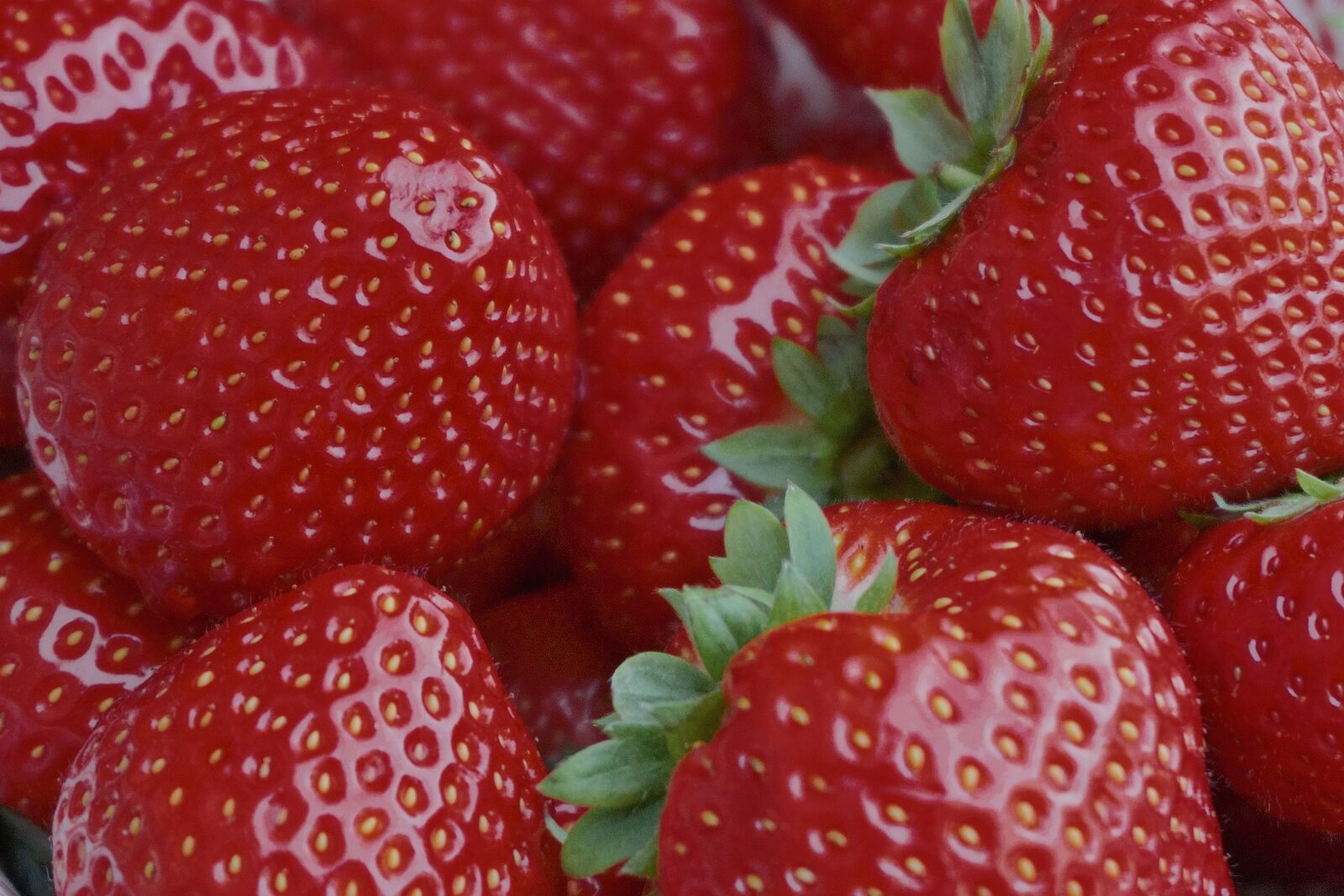
We now have a wide range of strawberry varieties for the garden. These are divided into very early and very late varieties according to the harvest date. A distinction is also made between single-bearing and multiple-bearing varieties.
This distinction is based on the fruiting of the strawberries, as the plants react differently to the length of the day. Single-bearing varieties flower and fruit under short-day conditions, while multiple-bearing varieties produce a crop under long-day conditions. There are also day-neutral strawberry varieties, which occupy a special position here. With this diversity of different varieties, you can create the largest possible harvest window.
Single-Bearing Strawberry Varieties: Early & Late Varieties
Single-bearing varieties are the classic garden strawberries (Fragaria x ananassa). Varieties such as Clery, Lambada, Honeoye, Elvira, Daroyal, Polka and Sonata are among the early to medium-early varieties. Medium-late to late varieties, on the other hand, are Elsanta, Mieze Schindler, Salsa and Florence. These varieties only produce their flowers and fruit once a year in spring, while the days are still short. Depending on the variety, they can then be harvested from May to June/July. This is why single-bearing strawberry varieties are also known as June-bearing or early summer-bearing varieties. Compared to everbearing varieties, single-bearing varieties usually produce larger fruit.
Table: Early, Medium and Late Strawberry Varieties
| Early Varieties | Medium Varieties | Late Varieties |
|---|---|---|
| Christine | Darselect | Alice |
| Clery | Deluxe | Faith |
| Dahli | Elsanta | Florence |
| Daroyal | Korona | Mieze Schindler |
| Donna | Polka | Malwina |
| Elvira | Renaissance | Pandora |
| Evita | Senga Sengana | Salsa |
| Honeoye | Sonata | Snow White |
| Lambada | Symphony | Vicoda |
Everbearing Strawberries: The Best Varieties
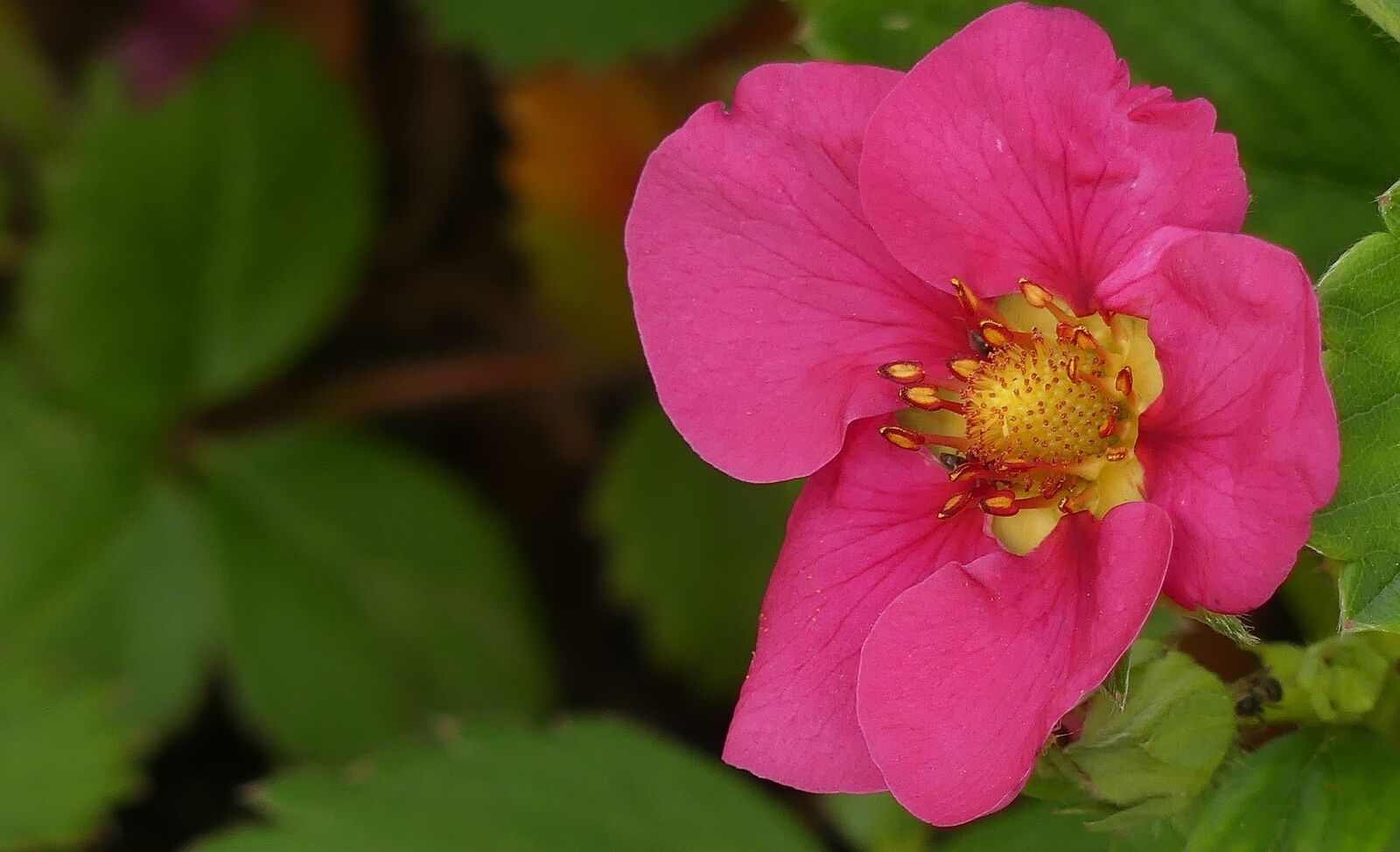
Multi-bearing varieties, on the other hand, are also able to develop flowers during the warm summer months and under long-day conditions. Their harvest window follows that of the single-bearing strawberry varieties and begins in June/July. After a resting phase in which new flowers are set, they can be harvested again in August/September. Wild strawberries (Fragaria vesca) belong to the multi-bearing (remontant) species. Varieties such as Waldkönigin or Baron von Solemacher are popular among gardeners. Monthly strawberries (Fragaria vesca var. semperflorens) are also remontant. Varieties such as Mara des Bois, Ostara and Rügen or the climbing strawberry Kletter Toni have proven themselves here.
List of Popular Multiple-Bearing Strawberry Varieties:
- Amandine: This easy-care variety produces medium-sized, elongated to heart-shaped fruits. Harvesting is possible well into the fall, especially as this variety is quite resistant to diseases.
- Bravura: A strawberry variety that produces medium-sized, sweet fruits. Its berries are firm, making them easy to store. This variety is also well suited for cultivation in fairly hot weather.
- Favori: This variety is a cultivar of Mara de Bois with aromatic, mostly large fruits.
- Furore: With a good yield and fruit quality, this is a popular variety that can be harvested early in the year.
- Hademar: This strawberry variety develops sweet, firm fruits that can be harvested between July and October. It is resistant to diseases such as powdery mildew, gray mold and thrips.
- Mara de Bois: This is a hybrid of wild and garden strawberries with medium-sized, dark red fruits. Although the yield is not quite as high, the fruits have a special musky aroma.
- Ostara: In a sunny location, this variety grows particularly quickly and produces a very high yield. The small berries impress with their full-bodied aroma. Harvesting is possible until October.
Old Strawberry Varieties: List of Special Varieties
- There are some varieties that stand out from the others: If you like planting heirloom varieties, you can choose varieties such as Rügen, Königin Luise or Mieze Schindler. With heirloom varieties, however, you should bear in mind that they are usually not yet self-fertile. You should therefore plant another variety, such as 'Senga Sengana', alongside plants of the 'Mieze Schindler' variety.
- There is also a special variation in breeding: strawberry plants that produce white fruit. Varieties such as Snow White or Natural White are popular here. An old strawberry variety with white fruit is the 'Apricot Chinoise' variety.
- Another special variety is Florika (Fragaria vecana), which is also known as strawberry meadow . Its runners form a closed ground cover that grows by around 50 cm/19,7 in each year.
You can find out which strawberry varieties are approved via the Federal Plant Variety Office. Here are some varieties that can be found in old literature and have received a variety approval for the preservation of biodiversity. These varieties are rarely found in commercial strawberry cultivation, but can easily be grown in hobby gardens. Numerous varieties are listed here, such as Abricotée, Abel Carrière, Admiral Dundas, Alexander, Alpha, Amateur, Austria, Cassandra, Champion, Comet, Cosmos, German Empress, German Hero, Eleanor, Eliza, Emma, Favorite, Gaillon, Gallande, Hammonia and many more. These varieties originate from a literary source from 1888, Goeschke's Book of Strawberries. Heirloom varieties are varieties that were first classified in the nineteenth century. You can find out more about Heirloom Varieties in our article.
Best Strawberry Varieties for the Balcony: Hanging Strawberries
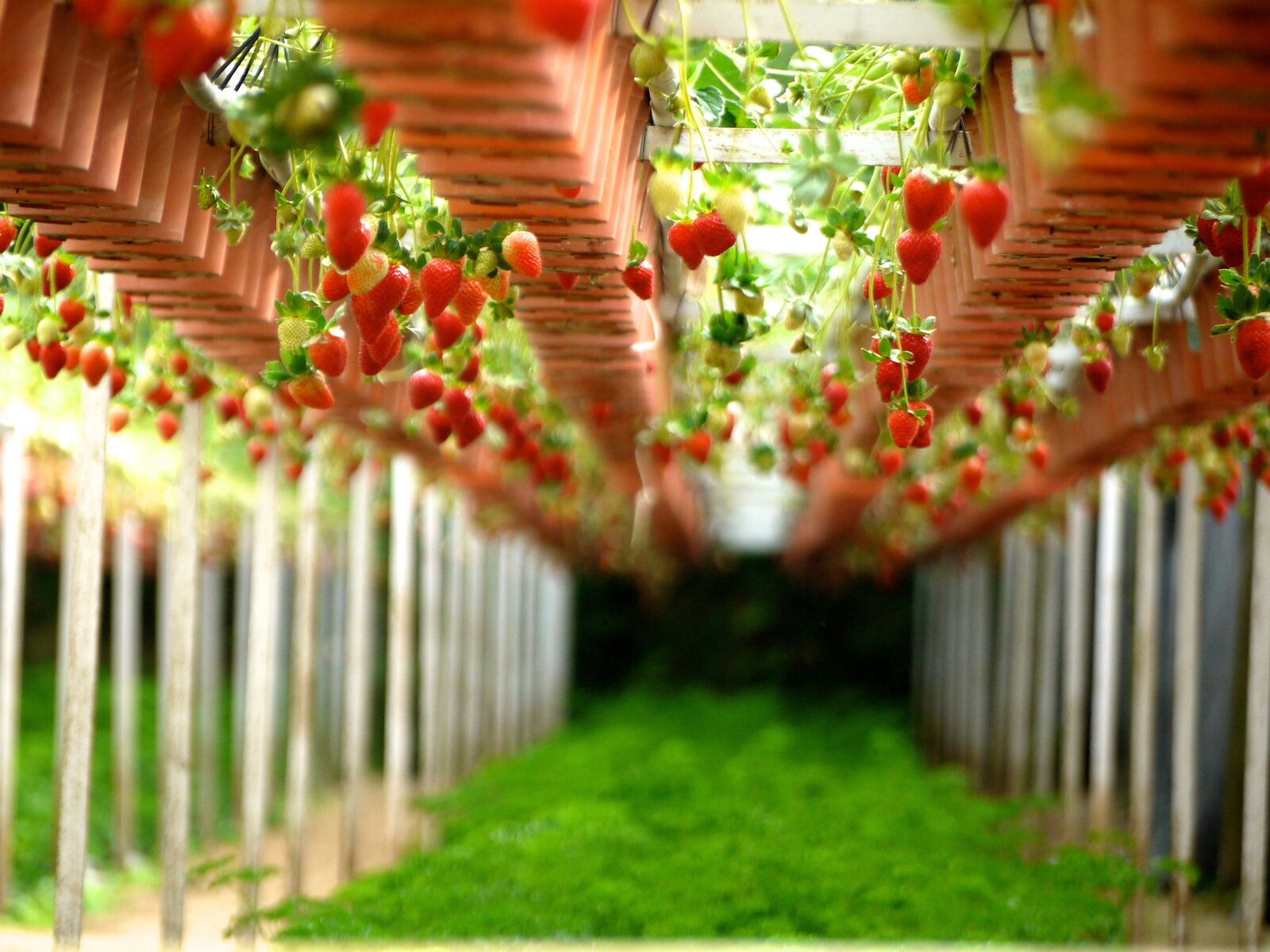
Many strawberry varieties take up a lot of space with their runners. Month strawberries are therefore best suited for growing on the balcony. They hardly form any runners and are usually propagated by direct sowing. These plants can be cultivated compactly in a pot. Month strawberries are descended from the wild strawberries native to this area. For this reason, these crosses are very robust and can also be grown in partial shade. Depending on the variety, you can harvest delicious strawberries from your balcony from June to November.
There are also climbing strawberry varieties that are well suited to vertical cultivation on the balcony. These varieties are characterized by strong tendrils and runners, but they do not climb on their own. You need to attach the tendrils to a climbing support so that they can grow by climbing. A trellis or climbing spirals are suitable climbing aids. However, you could also use a rabbit fence or wooden poles. If you don't attach them, these strawberry varieties can also grow hanging. You can find more Ideas for Space-Saving, Vertical Cultivation of Fruit and Vegetables in this article.
Climbing Strawberries: Varieties for Vertical Cultivation
- Flamenco: This everbearing strawberry variety produces a large harvest with sweet, firm fruits. Well suited for vertical cultivation in hanging pots.
- Hummi: Everbearing variety with strong vines and sweet fruits. Robust variety with low susceptibility to fungal diseases such as gray mould.
- Kletter Toni: Strawberry plant with large, red and juicy fruits. This variety is everbearing and well suited for the balcony.
- Mountainstar: This single-bearing variety also tolerates colder temperatures well. You can start harvesting the sweet, aromatic fruits early in the year. Good fruit quality.
- Super Star: Single-bearing strawberry variety with light red, large fruits of very good quality.
- Tarpan: Forms beautiful pink flowers that are very decorative. An everbearing strawberry variety with small, sweet fruits.
- Toscana: Everbearing strawberry variety with pink flowers. Hanging growth habit, can therefore be grown well in pots or vertically.
Table: List of Strawberry Varieties
| Strawberry Variety | Single or Multiple Bearing | Early, Medium or Late Variety | Susceptibility to Disease | Characteristic |
|---|---|---|---|---|
| Alice | single bearing | late | robust against root diseases, mildew and botrytis | good storability |
| Arosa | single bearing | medium | robust against root diseases, mildew and botrytis | very sweet fruits |
| Ava | single bearing | early | robust against mildew and botrytis, medium susceptibility to root diseases | usually produces a second harvest late in the year |
| Bolero | multiple bearing | early | robust against root diseases, mildew and botrytis | |
| Calypso | multiple bearing | early | robust against root diseases, mildew and botrytis | sweet fruits |
| Camarosa | single bearing | medium | robust against root diseases and botrytis, medium susceptibility to mildew | good storability |
| Clery | single bearing | early | robust against root diseases and botrytis, quite susceptible to mildew | good storability |
| Darselect | single bearing | medium | robust against botrytis and root diseases, medium susceptibility to mildew and spider mites | easy to pick |
| Elsanta | single bearing | medium | quite robust against botrytis, susceptible to root rot or mildew | very durable |
| Elvira | single bearing | early | Medium susceptibility | easy to pick |
| Evita | single bearing | early | low susceptibility to root diseases, mildew & botrytis, medium susceptibility to white spot disease | few runners, well suited for vertical cultivation |
| Flamenco | multiple bearing | early | low susceptibility | Hanging strawberry, well suited for vertical cultivation |
| Florence | single bearing | late | low susceptibility | hard to pick |
| Florika | multiple bearing | medium | very resistant to diseases | Strawberry meadow (dense ground cover) |
| Honeoye | single bearing | early | susceptible to root diseases and mildew, slightly susceptible to botrytis | good storability |
| Juliette | single bearing | medium | medium susceptibility | |
| Korona | single bearing | medium | low susceptibility | easy to pick |
| Lambada | single bearing | early | susceptible to mildew and root diseases, less susceptible to botrytis | |
| Malwina | single bearing | late | robust against root diseases and mildew, susceptible to botrytis | can also be cultivated on heavy soils |
| Mara de Bois | multiple bearing | early | low susceptibility | Very aromatic wild strawberry flavour |
| Mieze Schindler | single bearing | late | robust against root diseases, medium susceptibility to mildew and botrytis | old variety |
| Pandora | single bearing | late | medium susceptibility | hard to pick |
| Polka | single bearing | medium | medium susceptibility | easy to pick |
| Rosie | single bearing | early | low to medium susceptibility | easy to pick |
| Salsa | single bearing | late | robust against botrytis, low susceptibility to root diseases and mildew | low storability |
| Selva | multiple bearing | early | low susceptibility | good durability |
| Senga Sengana | single bearing | medium | low susceptibility to root diseases and mildew, susceptible to botrytis | resistant to drought |
| Sonata | single bearing | medium | robust against botrytis, less susceptible to root diseases and mildew | good storability |
| Sophie | multiple bearing | late | medium susceptibility, highly susceptible to blossom blight | |
| Symphony | single bearing | medium | robust against botrytis and root diseases, medium susceptibility to mildew and soft skin mites | good durability |
| Zanta | single bearing | medium | low susceptibility, only very susceptible to mildew | easy to pick |
Source: https://www.bundessortenamt.de/bsa/media/Files/BSL/bsl_erdbeere_2015.pdf
If you have any questions or comments, please write to us at magazin@fryd.app. Would you like to receive helpful gardening tips all year round and plan your own beds optimally? Then register here or download the Fryd app for Android or iOSdownload.
Fryd - your digital bed planner
Titelbild von Alejandro Piñero Amerio from Pixabay
Marie
Current Topics in the Community

#red , #tuesday

Liked 1 times
#testpostcount

Dec 2025
Popular Articles

Companion Plants for Carrots: What (Not) to Plant With Carrots

Companion Plants for Celery : What (Not) to Plant With Celery?

Strawberry Types: List of Best Strawberry Varieties

Companion Planting With Strawberries: Companion Plants and Planting Plan

Basil Varieties & Types at a Glance

What to Plant With Cabbage: Good and Bad Companion Plants

Fertilizing Strawberries: Home Remedies & Natural Fertilizers at a Glance

Growing Sweet Potatoes: Tips on Cultivation & Companion Plants

Companion Plants for Kitchen Herbs: Chives, Parsley & Co

What Herbs Can Be Planted Together?
FAQ
What types of strawberries are there?
There are many different strawberry varieties: large-fruited garden strawberries such as Elsanta, Clery, Sonata and Korona, but also small-fruited wild strawberries such as Mara de Bois or Mieze Schindler. There are also many other species and varieties.
How many strawberry varieties are there?
There are thousands of strawberry varieties worldwide, as the strawberry grows worldwide and is also found in the wild. Around 20 of these varieties play an important role in commercial cultivation in Germany.
What climbing strawberries are there?
Strawberries do not really climb, but can be tied up by the tendrils. Varieties that are suitable for this are: Flamenco, climbing Toni, Tarpan or Toscana.
What are the most popular strawberry varieties?
The most popular varieties of strawberries vary by region, but favorites often include Elsanta, Sonata, Honeoye and Ostara.
